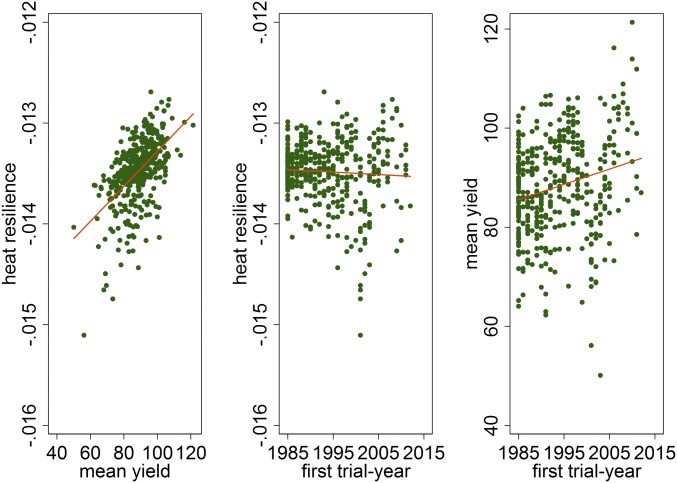Fig. 2.
The trade-off between mean yield and heat resilience, as well as the innovation of breeding efforts over time. (Left) Mean yields and heat resilience are estimated for each cultivar and plotted against each other. (Middle) The resilience estimates against the year in which the cultivar first appeared in the field trial data. (Right) The same for mean yields. The reported value for heat resilience is the estimated coefficient from the regression model for extreme heat variable, which measures the percentage impact on yield from an additional DD above 33 °C. The smaller the number in absolute value the more heat-resilient the cultivar is. The mean yields are predicted under normal weather conditions, defined as the sample average of the observed weather variables, and are thus representative of yield potential. Lines indicate fitted values from a linear regression.

